It looks like you're using an Ad Blocker.
Please white-list or disable AboveTopSecret.com in your ad-blocking tool.
Thank you.
Some features of ATS will be disabled while you continue to use an ad-blocker.
share:
My brain's going a bit wonky, since I've been reading about this for hours now, but the Masonic link took me to the only thing I know about Masons
(other than their generosity at fetes) in Scotland - Rosslyn chapel.
The Stone Puzzle of Rosslyn Chapel
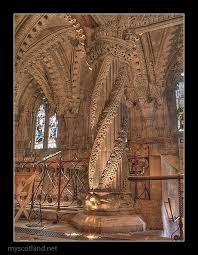
Ok, it's a tenuous link, and we know the Christians tended to rebuild their churches over sacred 'pagan' sites. But it's a curious link, and one I'll look into in greater detail soon.
Endless speculation also exists why Rosslyn was built where it is. Some have argued that it was for the presence of a Temple of Mithras or a megalithic structure that existed there. In Crichton, evidence of Pictish and Roman settlements have been found very close by and everyone agrees that Christians probably worshipped on the site of the present church even before the first building was constructed - perhaps as much as a millennium before the Collegiate Church was erected.
The Stone Puzzle of Rosslyn Chapel

Ok, it's a tenuous link, and we know the Christians tended to rebuild their churches over sacred 'pagan' sites. But it's a curious link, and one I'll look into in greater detail soon.
Fylgje
Thanks for sharing this. Rock carvings are fascinating to me. How many people today have actually sat down and tried to carve an intricate design into a stone? It's rather hard, even with modern tools. Not saying that it couldn't be done with what they had, I'm just saying that it requires a lot of elbow grease, knowledge and talent.
Can you imagine carving this? -

Imagine how long that would take, how much effort, how painful it would be.
You raise such a good point, that when you sit down and imagine trying to create one of these things, there can really be no doubt that the story they were telling had to be both extremely meaningful to them and important.
reply to post by beansidhe
Hello my friend, just to let you know I already S&F your thread yesterday. I know you invested a lot of time and effort to make this interesting thread. That's the kind of people we need here on ATS.
Hello my friend, just to let you know I already S&F your thread yesterday. I know you invested a lot of time and effort to make this interesting thread. That's the kind of people we need here on ATS.
edit on 31-1-2014 by Trueman because: (no reason given)
reply to post by Trueman
Thank you Trueman, that is a very kind thing to say!
I'm glad you had a chance to read it. If any of those symbols feel familiar, or if you have a thought sometime later, no matter how strange it might be, please let me know!
Hope all is good with you
B x
Thank you Trueman, that is a very kind thing to say!
I'm glad you had a chance to read it. If any of those symbols feel familiar, or if you have a thought sometime later, no matter how strange it might be, please let me know!
Hope all is good with you
B x
reply to post by Wolfenz
Thank you Wolfenz, for the interest and for letting me know.
I was wondering if I have the wrong idea about sacred?
The class 2 stones have Christian iconography on the back, leading many to believe that the stones themselves must be religious artifacts, both pre and post Christianity.
But hunting scenes are not religious, unless they depict maybe a sacrificial hunt? But that is thinking from a 'religious' perspective.
Which led me to think that I am interpreting 'religious' and 'sacred' to mean the same thing, when they don't.
I have had two U2U's from two wonderful people, telling me about their Scottish roots. From a previous thread:
"The first paragraph of R.L.Brown's book says:
"However sophisticated we may think ourselves, each person has a race memory of Scotland's folklore which may be triggered - at any time - by a thought, dream or emotion, that cannot be rationalised by modern standards."
I happen to agree with him. And so what is sacred to modern Scots? Our roots?
Were the symbols on the stones representing the land and/or beliefs that the Picts once came from?
Thank you Wolfenz, for the interest and for letting me know.
I was wondering if I have the wrong idea about sacred?
The class 2 stones have Christian iconography on the back, leading many to believe that the stones themselves must be religious artifacts, both pre and post Christianity.
But hunting scenes are not religious, unless they depict maybe a sacrificial hunt? But that is thinking from a 'religious' perspective.
Which led me to think that I am interpreting 'religious' and 'sacred' to mean the same thing, when they don't.
I have had two U2U's from two wonderful people, telling me about their Scottish roots. From a previous thread:
"The first paragraph of R.L.Brown's book says:
"However sophisticated we may think ourselves, each person has a race memory of Scotland's folklore which may be triggered - at any time - by a thought, dream or emotion, that cannot be rationalised by modern standards."
I happen to agree with him. And so what is sacred to modern Scots? Our roots?
Were the symbols on the stones representing the land and/or beliefs that the Picts once came from?
reply to post by beansidhe
Fascinating pictures. To me, the Pictish Beastie is a seahorse - those little fish that look like horses.
The Z-rod reminds me of the waters around Trondheim in Norway:
goo.gl...
In the Summers, the Norsemen would travel with the wind and weather across the North Sea. It would give them a tactical advantage to know what the weather was going to be like for the next three days, then they could return. Many lived in places like Skjolded - it would be impossible for anyone to find them:
goo.gl...
(It's an exercise to try and find your way in from the North Sea without using a zoomed-out view. The only way settlers could let each other know that land had been claimed would be to carve stone obelisks.
Fascinating pictures. To me, the Pictish Beastie is a seahorse - those little fish that look like horses.
The Z-rod reminds me of the waters around Trondheim in Norway:
goo.gl...
In the Summers, the Norsemen would travel with the wind and weather across the North Sea. It would give them a tactical advantage to know what the weather was going to be like for the next three days, then they could return. Many lived in places like Skjolded - it would be impossible for anyone to find them:
goo.gl...
(It's an exercise to try and find your way in from the North Sea without using a zoomed-out view. The only way settlers could let each other know that land had been claimed would be to carve stone obelisks.
reply to post by stormcell
A seahorse or a water horse?
Mysterious Britain
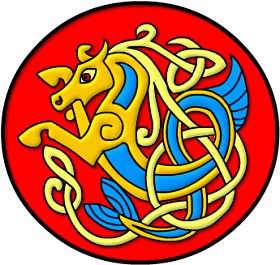
I think, stormcell, that you're onto something there.
As far as geography is concerned, I think that is an absolutely brilliant suggestion, and could well tie into the Z shape, as a motif, a reminder.
You're giving me so much to think about, thank you so much!!
A seahorse or a water horse?
The Kelpie is the supernatural shape-shifting water horse that haunts the rivers and streams of Scotland. It is probably one of the best known of Scottish water spirits and is often mistakenly thought to haunt lochs, which are the reserve of the Each Uisge. The creature could take many forms and had an insatiable appetite for humans; its most common guise was that of a beautiful tame horse standing by the riverside - a tempting ride for a weary traveller. Anybody foolish enough to mount the horse - perhaps a stranger unaware of the local traditions - would find themselves in dire peril, as the horse would rear and charge headlong into the deepest part of the water, submerging with a noise like thunder to the travellers watery grave. The Kelpie was also said to warn of impending storms by wailing and howling, which would carry on through the tempest.
Mysterious Britain

I think, stormcell, that you're onto something there.
As far as geography is concerned, I think that is an absolutely brilliant suggestion, and could well tie into the Z shape, as a motif, a reminder.
You're giving me so much to think about, thank you so much!!
reply to post by stormcell
Your suggestion is that these were originally markers to let others know you had claimed the land, and would be back later. And that the Picts carried this tradition with them, even after settling in Scotland.
I really like that, stormcell. I got a bit carried away with the Kelpie idea, and didn't quite appreciate what you were saying first time round.
That idea makes a lot of sense.
Everyone is so inspiring here, this is great!
(It's an exercise to try and find your way in from the North Sea without using a zoomed-out view. The only way settlers could let each other know that land had been claimed would be to carve stone obelisks.
Your suggestion is that these were originally markers to let others know you had claimed the land, and would be back later. And that the Picts carried this tradition with them, even after settling in Scotland.
I really like that, stormcell. I got a bit carried away with the Kelpie idea, and didn't quite appreciate what you were saying first time round.
That idea makes a lot of sense.
Everyone is so inspiring here, this is great!
beansidhe
reply to post by Wolfenz
Thank you Wolfenz, for the interest and for letting me know.
I was wondering if I have the wrong idea about sacred?
The class 2 stones have Christian iconography on the back, leading many to believe that the stones themselves must be religious artifacts, both pre and post Christianity.
But hunting scenes are not religious, unless they depict maybe a sacrificial hunt? But that is thinking from a 'religious' perspective.
Which led me to think that I am interpreting 'religious' and 'sacred' to mean the same thing, when they don't.
I have had two U2U's from two wonderful people, telling me about their Scottish roots. From a previous thread:
"The first paragraph of R.L.Brown's book says:
"However sophisticated we may think ourselves, each person has a race memory of Scotland's folklore which may be triggered - at any time - by a thought, dream or emotion, that cannot be rationalised by modern standards."
I happen to agree with him. And so what is sacred to modern Scots? Our roots?
Were the symbols on the stones representing the land and/or beliefs that the Picts once came from?
ok... from the start let me show you what the sones carving remind me of comes from a site that is dates to be over 12,000 years old..
from what you posted .. kinda similar just 10,000 + earlier as they are 4th century A.D. as its Claimed


to this
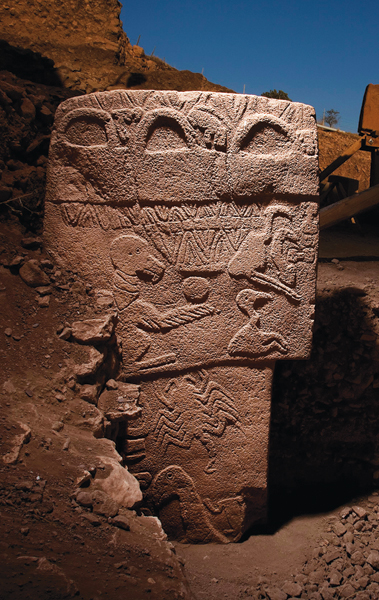

The Göbekli Tepe Ruins and the Origins of Neolithic Religion
Is Turkey’s “Stonehenge” evidence of the oldest religion in the world?
Biblical Archaeology Society Staff • 12/26/2012
www.biblicalarchaeology.org...
Göbekli Tepe
en.wikipedia.org...
but Strange as it sounds in Göbekli Tepe have similarity's of Easter Island
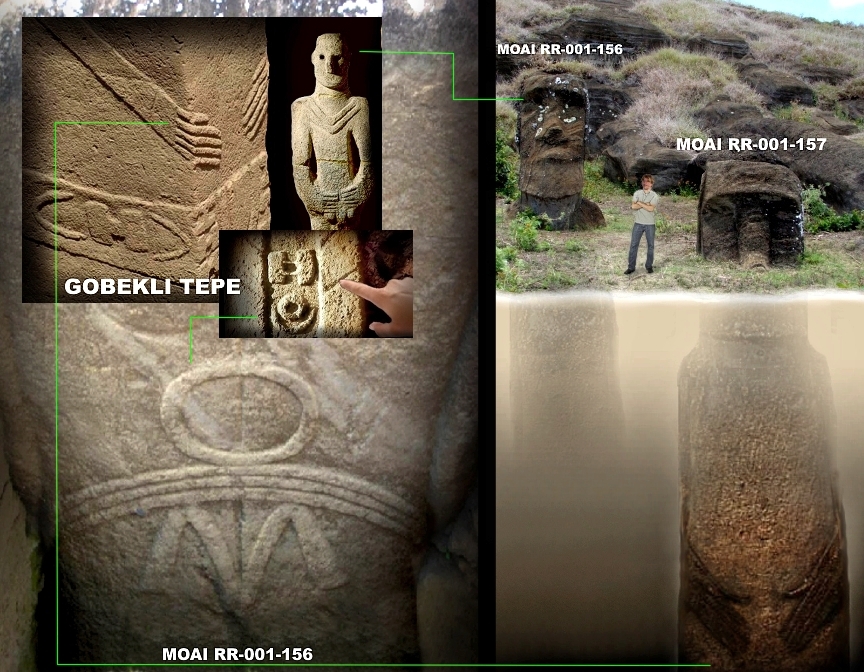

Here ia Nice site !!
Pictish Stones
www.pictishstones.org.uk...
Well Well as it looks there Someone Also thinks the Same of the Pictish Stones and the Göbekli Tepe Stone has a similarity
while i was looking for pics of both places Scotland and Turkey and came across this site
( The Language of One Upon a Time )
The Animals of Gobekli Tepe
whiteknightstudio.blogspot.com...
The study of symbols found throughout history is a proven and accurate way of gaining information about our ancestors and the places they lived. Duncan-Enzmann’s translations of Magdalenian transcriptions from 12,500 BC – only 2500 years prior to Gobekli Tepe – have brought solid information to our generation about Ice Age culture, and dispelled many of what I now term “Cave Man Myths.” It is likely that the picture language of the Magdalenians (Altamira and Lascaux being the most familiar) is the basis for the pictographs found on the stones at Gobekli.
To begin decoding these picture stories let’s look at some symbols of a more recent culture, the Picts. Comparing Pictish inscriptions with those at Gobekli shows astonishing similarities. They style of art, the method of carving, even the subject matter is similar. One could come to the conclusion that the carvings were made by the same culture.
Pictures are the oldest language in the world, and pictograms are not a dead language – picture languages are based on nouns. Things. A lion is still a lion. The sun and moon are still the same images. Therefore, a language which uses images, or nouns (Duncan-Enzmann refers to them as Cardinals), is still valid in terms of communication. That these carvings resemble those by the Picts is the first observation. We can compare the Gobekli symbols to those made thousands of years prior and find the same result. Coupling these comparisons with the historic timeline of Duncan-Enzmann supports a conclusion that the ancestors of the Picts made them, and so it would be they that built Gobekli Tepe Observatory. It is aligned for observation, and the holes in the stones are perfectly bored, and were used for astronomical siting. (see Astronomical Advances in Prehistory, and Duncan-Enzmann Timeline)
Now if you think of the legends m tales of the Dan Clan The lost tribe of Dan of Scotland
It makes you think...
where the ruins of Gobekli Tepe are an not so far away 350 miles of Mount Ararat
to go Deeper ... in the Conspiracy Realm we go!!
As there Many Sites Claiming the Celts Irish the Dannons came from Turkey
as the Scots came from Ireland from the Scotti Clan Supposedly
But the Majority is from Conspiracy Sites as i Said.. it a whether you believe it or not kind of thing
Ill just Post a Few
The Tribe of Dan and the lost Tribe of Israel
www.bibliotecapleyades.net...
The Dananns left Atlantis to settle in Asia Minor (now Turkey), Greece and the islands of Aegean.
The Danaans also settled on Cyprus and in ancient times it was known as Ia-Dan or the "Isle of Dan". The name of the Isle of Man in the Irish Sea, a place so important to the Druids, has the same origin, no doubt. The Tauras Mountains in Turkey, the Baleric Islands and Syria were other Danaan settlements and they traveled from Atlantis to Britian where they became known as Tuatha de Danaan or the "People of the Sea" .
Celts ?
We it also goes to the Story that Picts were to be known to be Darker shade like Bronze like Persian people ??
but in a twist
the Scotti and Picts were Arch Enemy's at one time and just mixed and blend their race and culture together in time
but another Twist is!
there is striking Similarity of Picts of Art and Tattooing and the New Zealand Tribe the Maruri WOW
and to read about this for this connection
BES OF EGYPT & TARANAICH-THOR OF EUROPE IN THE ANCIENT SOUTH PACIFIC.
www.celticnz.co.nz...&%20Thor/Bes&Taranis.htm
So was there a big civilizations of ancient trade routes that spread cultures ?? crossing them??
edit on 1-2-2014 by Wolfenz because: (no reason given)
reply to post by Wolfenz
And again, in Mongolia:
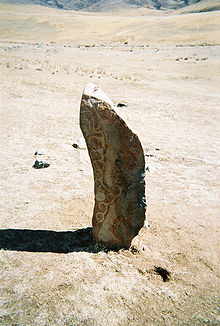
Deer Stones
Thank you for this, Wolfenz, I'll come back to your post in a wee while, when I have more time.
There is enough information there for another 10 threads!
I agree with you, the Turkish stones do look like the Pict stones. This is why I thought similar symbols might exist somewhere else.
The Scotti link is really interesting, but I need to read through all of your links first.
You have brought so much here, a million thank yous xxx
And again, in Mongolia:

Deer Stones
Thank you for this, Wolfenz, I'll come back to your post in a wee while, when I have more time.
There is enough information there for another 10 threads!
I agree with you, the Turkish stones do look like the Pict stones. This is why I thought similar symbols might exist somewhere else.
The Scotti link is really interesting, but I need to read through all of your links first.
You have brought so much here, a million thank yous xxx
reply to post by Wolfenz
Interesting, one of the first links I dropped also made mention of this. Specifically it said that the Stone of Destiny was brought to Scotland from Israel then taken to England before it was stolen and (some say) later replaced with a duplicate.
Interesting, one of the first links I dropped also made mention of this. Specifically it said that the Stone of Destiny was brought to Scotland from Israel then taken to England before it was stolen and (some say) later replaced with a duplicate.
reply to post by beansidhe
Hi beansie
As you know I'm of Celtic decent as well just the opposite end of Britain
This might be a stretch but this is arms of the Godolphin family
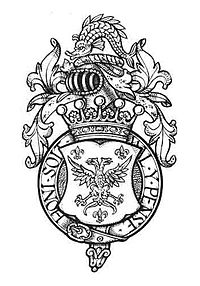
A very quick photo shop
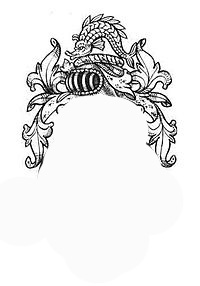
Dolphin here as well on top
Look familiar ?

Like I said it's a stretch but you never know
A couple of Cornish carved stones
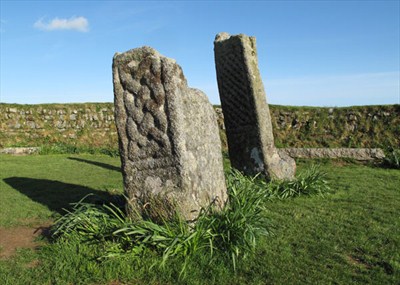
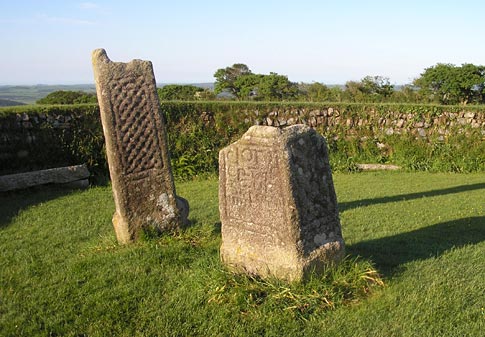
Very similar to the Scottish ones
Cody
Hi beansie
As you know I'm of Celtic decent as well just the opposite end of Britain
This might be a stretch but this is arms of the Godolphin family

A very quick photo shop

Dolphin here as well on top
Look familiar ?

Like I said it's a stretch but you never know
A couple of Cornish carved stones


Very similar to the Scottish ones
Cody
edit on 2/2/14 by cody599 because: (no reason given)
reply to post by cody599
Very similar stones, thank you Cody!
That appears to be a Pictish beastie on the coat of arms :
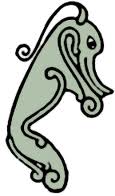
And as it is the coat for the Godolphin family, I guess we could tentatively say the Beastie is a dolphin? It's possible. I'll need to try to find old stories with dolphins and see what they represent. Especially ones with legs?
The shape is similar too, and we know the Picts, the Welsh, the Scots, the Cornish and the Irish (the P Celtic and Q Celtic speakers) share later histories.
This is just brilliant, Cody, thank you!!
Very similar stones, thank you Cody!
That appears to be a Pictish beastie on the coat of arms :

And as it is the coat for the Godolphin family, I guess we could tentatively say the Beastie is a dolphin? It's possible. I'll need to try to find old stories with dolphins and see what they represent. Especially ones with legs?
The shape is similar too, and we know the Picts, the Welsh, the Scots, the Cornish and the Irish (the P Celtic and Q Celtic speakers) share later histories.
This is just brilliant, Cody, thank you!!
reply to post by beansidhe
This is from an Cornish legend about Jack the giant killer
Dolphins seem to have an important role in Celtic legends
So may we assume that if a dolphin is present it's there to ease a journey ?
Just a thought
Cody
This is from an Cornish legend about Jack the giant killer
Here's the valiant Cornishman
Who slew the Giant Cormoran.
As you walk up the main pathway from the harbour to the Castle, you pass the heavily shuttered well, where the giant fell.
Lycidas (Milton)
Or whether thou to our moist vows deny'd,
Sleep'st by the fable of Bellerus old,
Where the great vision of the guarded Mount
Looks toward Namancos and Bayona's hold;
Look homeward Angel now, and melt with ruth.
And, O ye Dolphins, waft the haples youth.
waft (wäft, wăft)
v. waft·ed, waft·ing, wafts
v.tr.
1. To cause to go gently and smoothly through the air or over water.
2. To convey or send floating through the air or over water.
Dolphins seem to have an important role in Celtic legends
So may we assume that if a dolphin is present it's there to ease a journey ?
Just a thought
Cody
reply to post by Wolfenz
Also from your link, Wolfenz, it speaks about the Telchines:
Telchines Wiki

And as Thorneblood has just picked up on the Stone of Destiny, I need to look into this too.
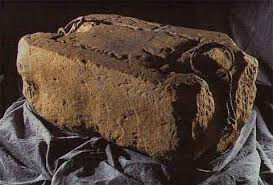
Stone of Scone
This is all getting a bit odd!
Also from your link, Wolfenz, it speaks about the Telchines:
In Greek mythology, the Telchines (Greek: Τελχῖνες Telkhines) were the original inhabitants of the island of Rhodes, and were known in Crete and Cyprus.In Greek mythology, the Telchines were the original inhabitants of the island of Rhodes, and were known in Crete and Cyprus.
Their parents were either Pontus and Gaia, or Tartarus and Nemesis, or else they were born from the blood of castrated Ouranos along with the Erinyes.[1] In another story there were nine Telchines, children of Thalassa and Pontus; they had flippers instead of hands and dogs' heads and were known as fish children.[2]
Telchines Wiki

And as Thorneblood has just picked up on the Stone of Destiny, I need to look into this too.

The origin of this famous Stone is shrouded in myth. According to legend, it came from the Holy Land, where Jacob supposedly used it as a pillow in Biblical times. Transported through Egypt, Sicily and Spain, it was taken to Ireland, where Saint Patrick himself blessed this rock for use in crowning the kings of the emerald isle. It is certainly possible that the Stone may have been used in the coronation ceremonies of the Irish Kingdom of Dalriada from roughly 400 AD until 850 AD, when Kenneth I, the 36th King of Dalriada, moved his capital of his expanding empire from Ireland to Scone (pronounced "scoon") in what is now Perthshire, Scotland. The Stone was moved several times after that, and used on the remote, western island of Iona, then in Dunadd, in Dunstaffnage and finally in Scone again for the installation of Dalriadic monarchs.
Stone of Scone
This is all getting a bit odd!
reply to post by cody599
That's a great idea. We know they travelled by boats, the sea would be like a second home to many, fishing etc. A dolphin as a protector. Maybe if it had legs it could come on land, and protect families there too? Just thinking out loud!
Or...it's a remnant from an Atlantean myth about the Telchines? Or both?
My head hurts!
Dolphins seem to have an important role in Celtic legends
So may we assume that if a dolphin is present it's there to ease a journey ?
Just a thought
That's a great idea. We know they travelled by boats, the sea would be like a second home to many, fishing etc. A dolphin as a protector. Maybe if it had legs it could come on land, and protect families there too? Just thinking out loud!
Or...it's a remnant from an Atlantean myth about the Telchines? Or both?
My head hurts!
reply to post by beansidhe
Thought you might find this bit interesting....
CNN - Castle in Wales
Thought you might find this bit interesting....
CNN - Castle in Wales
Mr Page said the dolphin's skull also dated back to the medieval period before the 15th Century. "It is not uncommon to find dolphin remains in castles near the coast because they would have been eaten by people at medieval feasts along with swans and other large animals," he added.
reply to post by beansidhe
Great thread you have there beanie,
Its always been a perception off mine that Scotland has been Downtrodden for no other reason than its intellectual passion off life and the true meaning off mankind,
Take the symbol's for an example, The average lifespan in Celtic Pict days must have been very short in them days and for an infant growing to a mature level of understanding and being able to manufacture these wonderful carvings and drawings simply demonstrates the intelligence off the people in those times.
No wonder the charlatan Christians tried to subdue this type off Celtic expression it was away above any off there intellect and understanding.
Just my opinion Beanie, from an Ulster Scots man. S & F.
Great thread you have there beanie,
Its always been a perception off mine that Scotland has been Downtrodden for no other reason than its intellectual passion off life and the true meaning off mankind,
Take the symbol's for an example, The average lifespan in Celtic Pict days must have been very short in them days and for an infant growing to a mature level of understanding and being able to manufacture these wonderful carvings and drawings simply demonstrates the intelligence off the people in those times.
No wonder the charlatan Christians tried to subdue this type off Celtic expression it was away above any off there intellect and understanding.
Just my opinion Beanie, from an Ulster Scots man. S & F.
reply to post by Thorneblood
Dolphins in folklore
And they were also food? Wow, I didn't know that. Yum, swan and dolphin pie!
So, if they were a (luxury?) food, a guide, a predictor of calm seas they could be 'sacred' animals - even now they are thought of as helpful to humans.
The beastie could be a dolphin, a protective symbol for the family.
This image of the dolphin continued in myth and legend as the world transformed around them. Byzantine sailors, Arab sailors, Chinese and European explorers, all had tales of dolphins rescuing sailors or ships in trouble. Dolphins could predict calm seas. And a ship accompanied by dolphins was sure to find safe harbor, fair weather , and following seas. Just as with an albatross, it was terrible luck to harm a dolphin. This is very clear in the tales of Pelorus Jack, a dolphin described in the late 19th century who guided ships through a particularly treacherous strait off the coast of Tasmania.
Dolphins in folklore
And they were also food? Wow, I didn't know that. Yum, swan and dolphin pie!
So, if they were a (luxury?) food, a guide, a predictor of calm seas they could be 'sacred' animals - even now they are thought of as helpful to humans.
The beastie could be a dolphin, a protective symbol for the family.
new topics
-
Little Johnny and Larry should team up
General Chit Chat: 1 hours ago -
Will Us use alien technology to fight in ww3?
World War Three: 2 hours ago -
posted in wrong forum
Aliens and UFOs: 2 hours ago -
Shane Gillis commercial
Jokes, Puns, & Pranks: 8 hours ago -
Elon Says It’s ‘Likely’ He Buys Tanking MSNBC
Political Ideology: 10 hours ago -
Montelukast affects brain, caused 5 year old to attempt suicide
Medical Issues & Conspiracies: 11 hours ago
top topics
-
Elon Says It’s ‘Likely’ He Buys Tanking MSNBC
Political Ideology: 10 hours ago, 16 flags -
Jaguar Rebrand Video Causes "WTF?" Moment - Seriously Weird
Automotive Discussion: 13 hours ago, 15 flags -
Montelukast affects brain, caused 5 year old to attempt suicide
Medical Issues & Conspiracies: 11 hours ago, 15 flags -
What Joe Rogan said Vs The View
Dissecting Disinformation: 17 hours ago, 13 flags -
Shane Gillis commercial
Jokes, Puns, & Pranks: 8 hours ago, 4 flags -
Let's start a conspiracy
General Conspiracies: 14 hours ago, 1 flags -
posted in wrong forum
Aliens and UFOs: 2 hours ago, 0 flags -
Will Us use alien technology to fight in ww3?
World War Three: 2 hours ago, 0 flags -
Little Johnny and Larry should team up
General Chit Chat: 1 hours ago, 0 flags
active topics
-
Jaguar Rebrand Video Causes "WTF?" Moment - Seriously Weird
Automotive Discussion • 18 • : KrustyKrab -
Why isn't Psychiatry involved?
Social Issues and Civil Unrest • 12 • : tamusan -
What Joe Rogan said Vs The View
Dissecting Disinformation • 22 • : TheMisguidedAngel -
Will Us use alien technology to fight in ww3?
World War Three • 1 • : atsalex2 -
Little Johnny and Larry should team up
General Chit Chat • 0 • : 727Sky -
Elon Says It’s ‘Likely’ He Buys Tanking MSNBC
Political Ideology • 72 • : nugget1 -
posted in wrong forum
Aliens and UFOs • 0 • : wrayth -
Montelukast affects brain, caused 5 year old to attempt suicide
Medical Issues & Conspiracies • 9 • : Daughter2v2 -
Well we know Putins ICBMs won't fail in their silos
World War Three • 174 • : 777Vader -
President-Elect DONALD TRUMP's 2nd-Term Administration Takes Shape.
Political Ideology • 234 • : WeMustCare
